Coventry: A City of Cultures - 8th July 2019
In January 2019 Dr Paul Grigsby of the Dept. of Classics and Ancient History at Warwick was awarded £2000 for the project 'Coventry: A City of Cultures' from GRP Connecting Cultures, at the University of Warwick. This project involved collaboration between the Department of Classics and Ancient History at the University of Warwick and academics from Coventry University, academics and curators at the Herbert Art Gallery and Museum in Coventry and Lunt Fort Roman site, and pupils and teachers of local Coventry schools. The project looked at the role played by the meeting of cultures in the development of Coventry, and was set up with the following aims:
To promote cultural diversity and the positives of cultural interactions ahead of Coventry City of Culture 2021
- To bring Coventry and Warwick Universities closer together and to increase dialogue between the two institutions
- To increase public perception of the work of their local universities
- To give local school children the opportunity to experience their local history and cultural amenities through interaction with experts
- To create an online resource on the history of Coventry and cultural diversity for use in teaching in local schools and thereby strengthening the connection between schools, local museums and universities more generally
- To create on-going working relations between Warwick University and local cultural institutions such as the Herbert Art Gallery and Museum, and the Warwickshire Museum
Project Description
Dr Paul Grigsby from the Department of Classics and Ancient History proposed a joint project with Dr Daniel Anderson of Coventry University focusing on Coventry as a meeting place of cultures, highlighting the different ways cultures meet, and what cultural diversity really means, by looking at different forms of cultural interaction from the Roman and early Medieval period. Working together with Lunt Roman Fort and the Herbert Art Gallery and Museum - which houses finds from Roman, Anglo-Saxon and Medieval Baginton and Coventry – the project sought to engage local schools with the cultural history of Coventry in the run up to Coventry City of Culture 2021.
Since at least Roman times, the area occupied by present day Coventry has been a cultural crossroads, where different ways of life have met, clashed, and intersected to form something new. Both materially and culturally, the earlier sites of interaction, conflict, and habitation have had a hand in shaping Coventry as we know and enjoy it today. In AD60 the Romans built an army camp at Lunt Fort, modern day Baginton on the outskirts of Coventry. Finds from the Fort are now housed in the Herbert Art Gallery and Museum. Set up after the revolt of Boudicca, the fort marked Coventry as an ancient frontier, a temporary boundary point between the Roman and Celtic worlds. Recent work on the linguistic evidence for Roman Britain suggests widespread cross-cultural interaction between the Celts and the Romans, for example in the presence of Celtic proper names on Roman wares, for which there is ample evidence across the Midlands. The military camp at Lunt may seem a mere engine of empire, but the reality of living side-by-side in a multicultural context is interaction not conflict. After the Romans, the Anglo-Saxons took up residence at Baginton. Relics from this early-medieval period have been found on the site of the Roman camp, and are also on display at the Herbert Art Gallery and Museum, alongside those from the later Medieval period. In 1043, not far from Baginton, Earl Leofric of Mercia and his wife Lady Godiva founded a Benedictine monastery dedicated to St Mary on the remains of an earlier nunnery. In time, a market was established at the abbey gates and the settlement expanded. Coventry became the hub of a cloth and leather trade, a bustling new centre in place of the frontier camp of Roman times.
The project involved:
- Liaising with local cultural Institutions such as the Herbert Art Gallery and Museum, Lunt Roman Fort in Baginton, and the Warwickshire Museum in Warwick.
- Creating contacts with local secondary schools in order to interest them in the project.
- Creating links between the Dept. of Classics and Ancient History at the University of Warwick and academics at Coventry University (Dr Daniel Anderson and Prof. Judith Mossman).
- Visits to local schools by Dr Paul Grigsby to talk about the project.
- A visit by local school children to the Herbert Art Gallery and Museum in Coventry, and Lunt Roman Fort in Baginton. This included talks by Warwick academics on interactions between Roman and British local cultures; artefact handling sessions with Herbert Gallery curators; a tour of the Medieval and Art Galleries of the Herbert; and a visit and tour of Lunt Roman Fort.
- Creation of display materials (posters) by local school children based on the topic of Roman/British interaction.
- Creation of web resources based on the project for use in local schools and to interest the general public.
- Continuing links between all of these institutions with an aim to create future exciting projects based locally for the benefit of local schools and the general public especially with a mind to Coventry’s status as City of Culture 2021.
Organisation
On 20th February 2019 Dr Grigsby met up with Dr Anderson of Coventry University to discuss the shape of the project and created an outline of the sessions to be delivered at the Herbert Art Gallery and Museum.
On 26th February 2019 Dr Grigsby met with Francis Ranford of Culture Coventry at the Herbert Art Gallery and Museum in Coventry to discuss the project. We decided that up to 100 local school children could be accommodated in three groups at the Herbert Art Gallery and Museum and at Lunt Roman Fort. The proposal was to have three concurrent sessions at the Gallery – a tour of the Anglo-Saxon/medieval galleries led by Museum staff; a session handling artefacts led by Museum staff; and an academic-led workshop on Roman Coventry and the cultural connections witnessed at the site. Following the visit to the gallery, the school children were then to have a tour of the Lunt Roman Fort.
Dr Grigsby made connections with the schools of the Futures Trust in Coventry, with whom he is working to introduce classics to their curriculum, and Year 7 pupils from Barr’s Hill and the President Kennedy School were chosen as the recipients of this opportunity.
The Warwick Classics Network (set up by Prof. Michael Scott and Dr Grigsby in 2018) is planning to use this project and the resources and links created to build up a lasting and growing relationship with local schools (especially those targeted as Widening Participation), opening up the idea of university study as a viable option to more pupils. The WCN will host the resources on its website, and create a space for local pupils to post content. We aim to use these resources as an introduction to especially under-achieving schools in the Coventry area, as a way of increasing our interaction with local WP schools, and of the schools with their local cultural establishments and history.
19th June 2019 - Building links with Local Museums
As part of this project, on Wed 19th June Dr Paul Grigsby of the WCN organised a cheese and wine get-together at the Oculus Building on the Warwick campus between members of the Dept. of Classics and Ancient History at Warwick, academics from Coventry University, and Museum staff from the Herbert Art Gallery and Museum in Coventry and the Warwickshire Museum in Warwick. The meeting was a great success and connections were forged that will continue to build between Warwick and its local community. We are especially excited about the idea of collaborative exhibitions to be organised for our planned Antiquities Room, which we aim to use as a means of bringing Classics to the wider community including local WP schools. More details of these future projects will be given below in the final section of this report. This is precisely the legacy that we hoped to create with this project.
Herbert and Lunt Monday Schools’ visit 8th July 2019
On Monday 8th July, a successful School Day was held to celebrate this project, with a visit to the Herbert Art Gallery and Museum and Lunt Roman Fort for 46 Year 7 pupils from Barr’s Hill School and 16 Year 7 ‘High Attainers’ from President Kennedy School, both local Coventry schools to whom the WCN and Classics for All are helping to introduce Classics in September 2019. The day involved object handling, gallery tours and academic sessions at the Herbert, followed by a tour of Lunt Roman Fort.
The students arrived at 10am at the Museum, and were welcomed by Dr Grigsby and Nicky McIntosh of Culture Coventry. The students were then split into groups and rotated through various sessions based in the Museum. In the Old Masters gallery, Brian Scholes gave an enlightening talk on the Gallery's first Masterpiece, the 'Bacchus and Ariadne' by Giordano (below). Brian gave an overview of the myth depicted in the painting, giving pupils an insight both into the continuing use of Greek mythology and Classics in Western Culture, plus insight into Coventry as an important cultural hub.
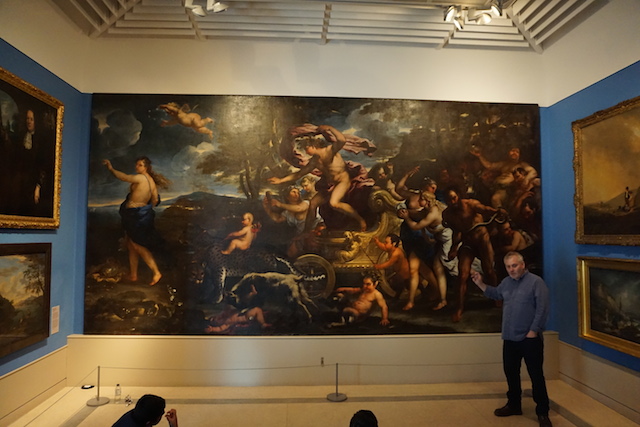
Another session was led by curator Martin Roberts (below), who led the students on a tour of the medieval section of the History Gallery, including a trip to the medieval basement, which lies beneath the floor of the gallery. This gave the pupils insight into the importance of Coventry during the Middle Ages as a hub of trade, and as a historical landmark.
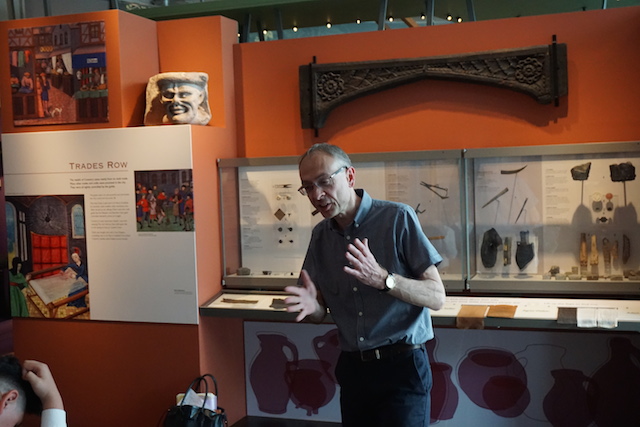
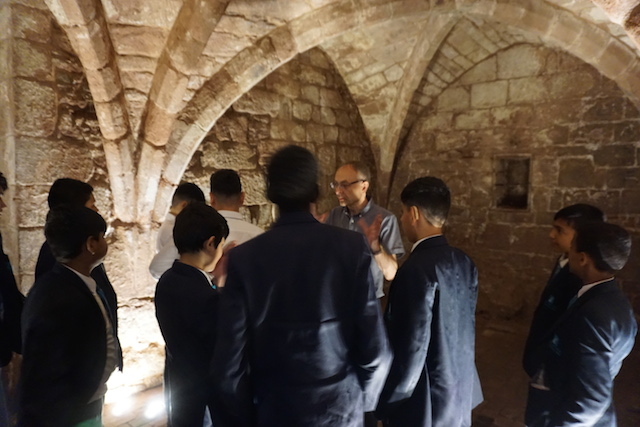
In a parallel session in the Museum Learning Space 1, curators Nicky McIntosh and Ali Wells led a session on Object handling/investigating objects, including objects from the collections and some replicas spanning pre-history to the 20th century. Students were asked to think like a curator and to investigate and catalogue the objects, finally putting into timeline order. The students were very engaged with this thoughtful session, and the results were very impressive.
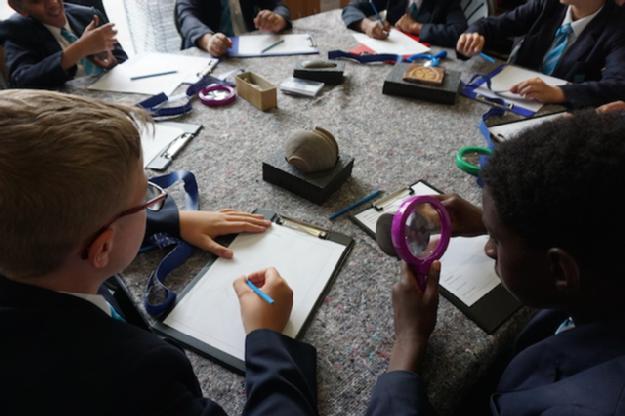
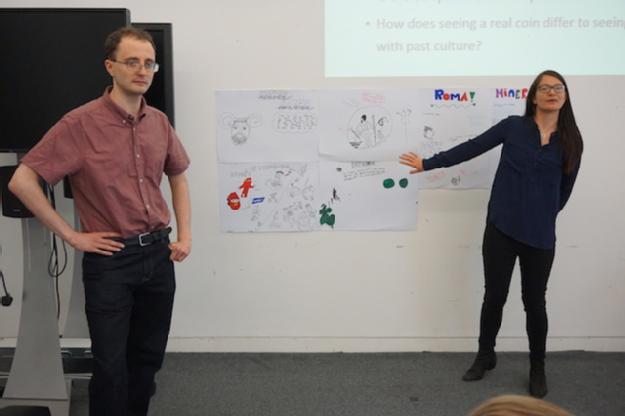
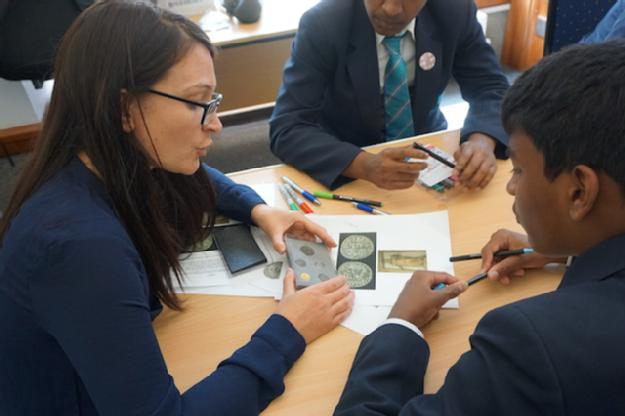
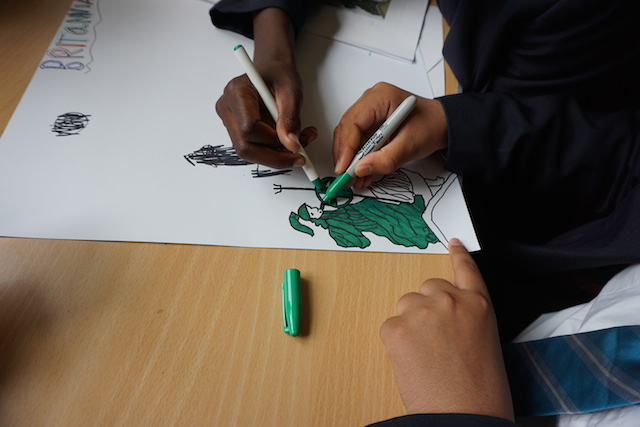
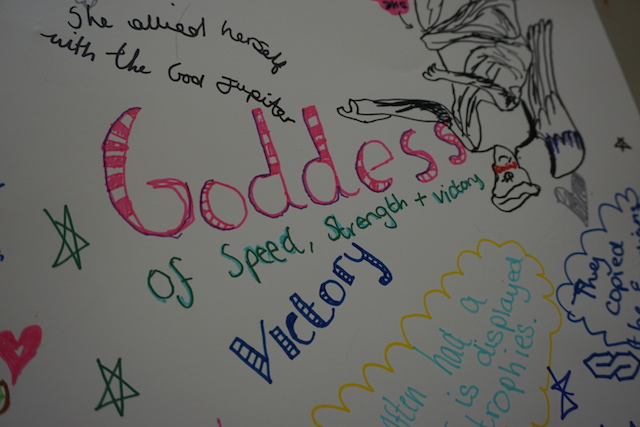
After lunch, the students were taken to Lunt Roman Fort in Baginton. Divided once again into groups, the students enjoyed at site tour and experience of a Roman battle drill from resident Roman conscript Rufus; a talk on Roman armour by another conscript, Gnaeus, in the granary; and a tour of Ancient Athens from our VR Headsets courtesy of the University of Warwick led by Dr Paul Grigsby, Denise Wilding, and Dr Daniel Anderson.
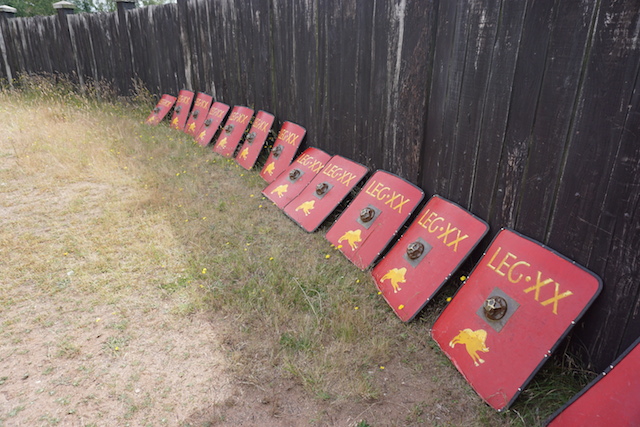
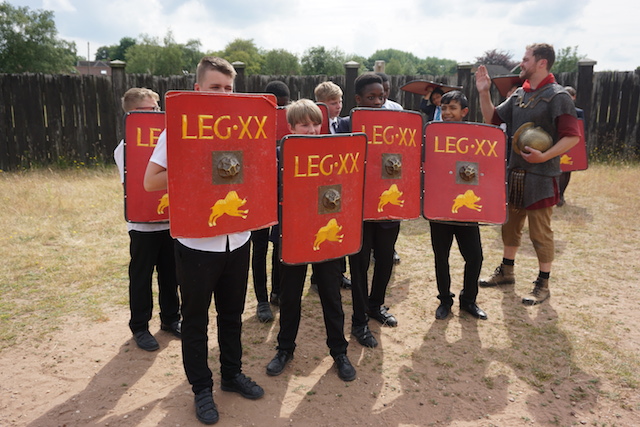
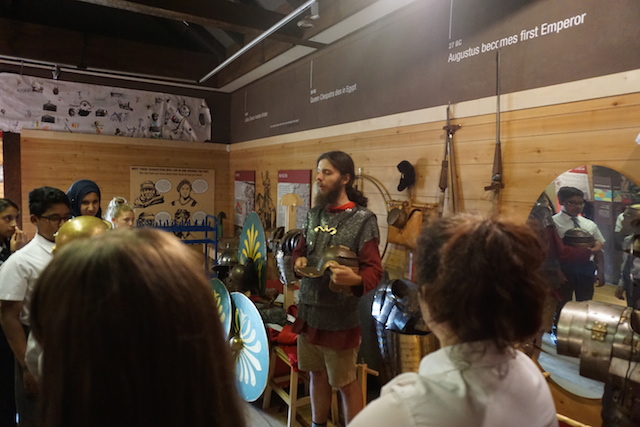
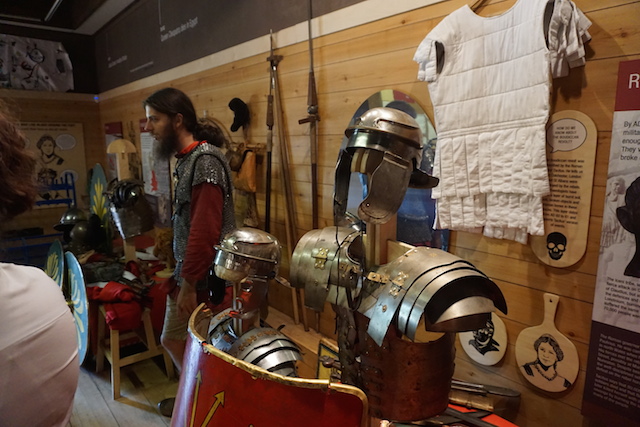
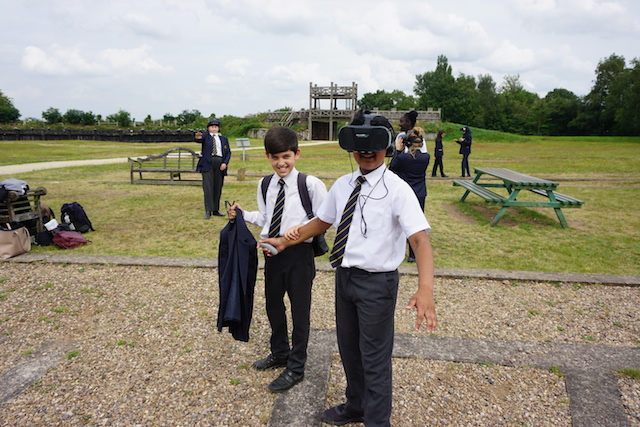
Future Developments and Legacy
Resources - Website
From this project Dr Paul Grigsby is developing a website hosting a report and resources for schools and teachers from the project, designed to encourage visits to the Herbert Art Gallery and Museum and Lunt Roman Fort as school groups. It is hoped that through links to the Herbert and Lunt websites, this website will also be used by the general public and encourage more interaction with their local heritage. Equally, we are planning to engage both Warwick and Coventry academics in the creation of online content and hope to produce collaborative research as a result of this.
The website will be used by Dr Grigsby to increase interaction between local schools, the local Universities, and our cultural and heritage institutions. The KS3 resources will also be used to encourage the teaching of Classics in local and regional schools.
